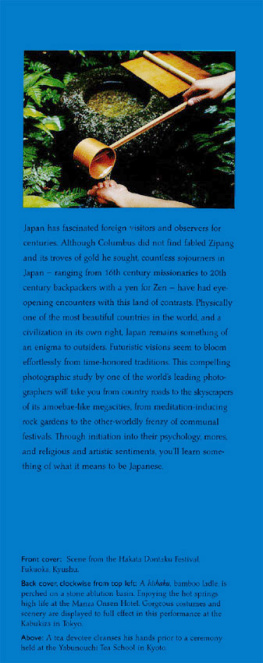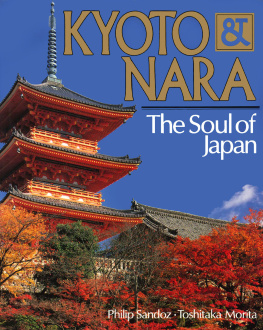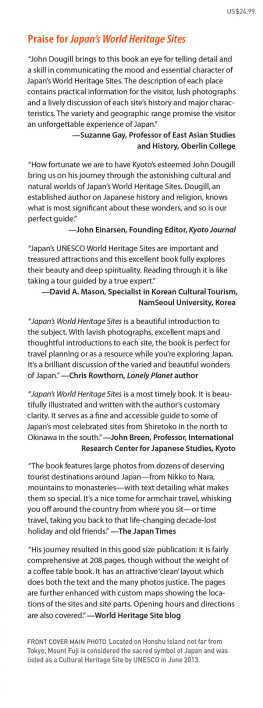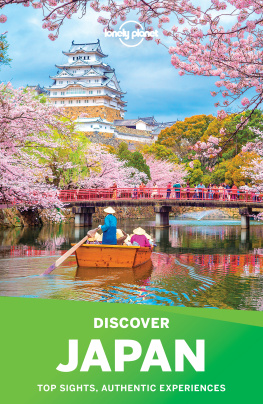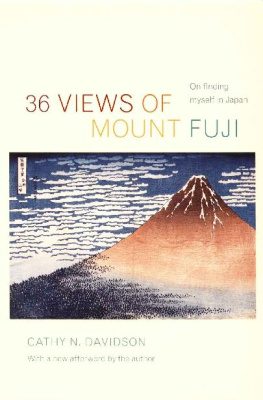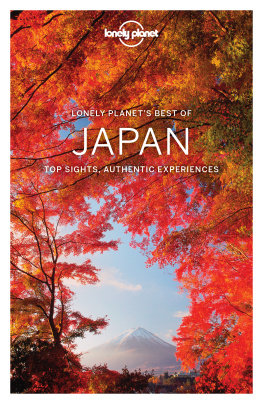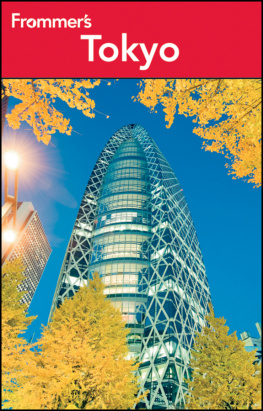The Japanese Enigma
"The people whom we have met so far are the best who have as yet been discovered, and it seems to me that we shall never find among heathens another race to equal the Japanese. They are a people of very fine manners, good in general, not malicious. They are men of honor to a marvel, and prize honor above all else in the world. They are a poor people in general, but their poverty, whether among the gentry or those who are not so, is not considered a shame."
Francis Xavier, in his first letter from Japan to superiors in Goa

A pair of wooden geto , slippers, at the venerable Tawaraya Inn, which has been operating for more than three centuries.

Snow falls on the Nijubashi bridge of the Imperial Palace in Tokyo.
I f Westerners consider Japan to be exotic, other Asians usually consider it an enigma. In fact, there is a question as to whether Japan should be classified as a sub-unit of the East Asian cultural sphere or treated as a separate civilization in its own right. Complicating (he matter further, the Japanese frequently declare themselves to be unique, even while speaking of "we Asians" in contra-distinction to the West But in the eyes of many Asians, Japan seems in Asia but not of Asia. What then is Japan?
The first key to understanding Japan and the Japanese is recognition of its geographical circumstances. The country lies some 160 kilometers off the Asian continent; it comprises four main islands (Honshu, Hokkaido, Kyushu and Shikoku) and over 1,000 small islands which, some 12,000 years ago, separated from the Asian mainland.
Climate, too, has been a critical factor in shaping the national character. Tokyo may be more southerly than Sicily but because of the workings of the monsoon system, Japan's climate can range from near tropical to sub-arctic, depending on location and season. The resulting diversity of scenery, flora and fauna is part of its attraction and never more so than in spring and autumn.

The austere elegance of the Daibutsu-den hall of the Todaiji in Nara, the world's largest wooden building and home to the Great Buddha.
The origins of the Japanese still remain unclear. Despite the relentless mantra declaring ethnic and cultural homogeneity, it is likely that the Japanese are of mixed ancestry. What is clear is that the earliest inhabitants were physically different from those in the 5th century, when Japan finally established a centralized state during its Kofun (Burial Mound) Period.
We do not know whether the original inhabitants were replaced by, or intermixed with, latecomers. Nevertheless, DNA testing makes it clear that the Japanese of historical times belong to a genetic pool that covers the Korean peninsula, much of north China and Mongolia, possibly originating in the Lake Baikal area.
The basic design of Japanese homes, however - wooden frames with thin removable walls - suggests southern origins. Okinawan culture offers hints about what core Japanese culture might have been like since the local religion and creation myths are similar to those in Japan.
By around AD 400 the Yamato dynasty, which may have originated in Kyushu, established a central government of sorts on the Nara Plain. This was a period of huge tumulus building. The largest were reserved for the emperors whose power even at this early stage seems to have been more symbolic and religious than political.

A bird's-eye view of the imposing Doibutsu , Great Buddha, in Kamakura accentuates its weathered patina. Its asymmetrical proportions make the view from about five meters back the most impressive.

School children on excursion amble beneath the giant, vermilion "floating torii" of Itsukushima Shrine, on Miyajima one of Japan's "three supreme views."
In 552 Buddhism was formally introduced. It marked a turning point in the archipelago's history, sparking a cultural revolution and forcing growth of a scale seldom seen in the world.
Just as the Greeks had generously borrowed elements of their civilization from Egypt and the Orient, the Japanese learned eagerly from China and Korea and, through them, from India. There followed the Taika Reform of 645 that attempted to transplant a system of strict centralized government modeled on that of Tang China. All agricultural land was declared the properly of the Imperial House. The system never really worked yet the changes were still momentous.
In 710 construction began on the country's first permanent capital at Nara and the imposing 15 meter Daibutsu, Buddha, was built there a mere 40 years after advanced bronze-molding techniques had been introduced from the mainland.
The Heian period, named after the capital Heian-kyo, (todays Kyoto) followed from 794 to 1185 and was one of the high points of Japanese civilization.
It was also the most feminine of periods in history; the aristocrats, or "dwellers among clouds as they were referred to, gave themselves up to the sophisticated pursuit of love. A potential beau would be judged on his calligraphy, poetry or choice of scent. The reputation of a court lady could be made or broken by her choice of kimono for a particular function. The characteristically Japanese atmosphere of delicacy, grace, refinement and aesthetic understatement was already established by the reverence for such qualities.
Around the middle of the 12th century Japanese history took a major turn. Although cultivable land had been expanding the amount of taxable state land shrank, which led to the devolvement of power to feudal lords. Many of these drew support from local warriors, bushi or samurai (the latter derived from the word saburai or "to serve"), who had their own land holdings. The two most prominent warrior clans, both of which claimed Imperial descent and were widely dispersed throughout the country, were the Taira (Heike) and Minamoto (Genji). Soon after the court allowed the unruly samurai to get involved, the centuries-old ban on political violence was quickly abandoned and warriors from around the country flocked to the banners of one of the two predominant clans, frequently switching allegiances for financial gain.

"The proud do not endure, they are like a dream on a spring night. The mighty fall at last, they are as dust before the wind." Heike Monogatari The shades of the vanquished Taira clan seem to flit among the night shadows of Itsukushima Shrine.



